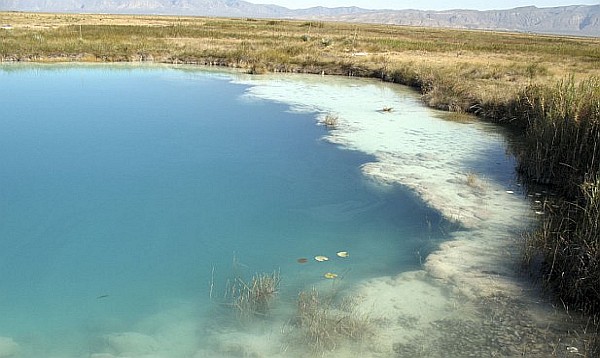Cuatro Cienegas, Mexico - A team of researchers is studying a place on earth, which is very similar to the Martian crater where NASA's rover "Curiosity" roams, in the hope to find clues about life on the red planet.
The place is Cuatro Cienegas, Mexico and researchers are analyzing the bacterial communities there that have survived in these inhospitable springs since the beginning of life on Earth.
"Millions of years ago fire and water forged the gypsum rocks locked in at Cuatro Cienegas, a Mexican valley that is very similar to the Gale crater where Curiosity is currently located on the red planet," explained Valeria Souza, evolutionary ecologist at the National Autonomous University of Mexico.
The researcher states that sulphur components from magma and minerals from the sea (carbonates and molecules with magnesium) are required to form gypsum. In the case of the Cuatro Cienegas Basin, the magma under the seabed was very active. In fact, it allowed for the continent displacement during the Jurassic Period: "Here was where the supercontinent Pangaea opened up some 200 million years ago, pushing the hemisphere north from the equator where it is now."
 |
| NASA's rover 'Curiosity' |
In the case of Mars, the scientists have not been able to confirm tectonic movement in its crust at any point, but they believe that a large meteorite crashed into its primitive sea. The fact that probing has detected gypsum in the Gale crater indicates that mineral-rich water was present and that sulphur was able to form due to the impact of the meteorite causing the crater.
It is no easy task to find a place on Earth similar to this Martian environment. For this reason astrobiologists are working hard in Cuatro Cienegas to understand how its bacterial communities work.
"This oasis in the middle of the Chihuahua desert is a time machine for organisms that, together as a community, have transformed our planet, yet have survived all extinctions. How they have managed to do this can be revealed by their genes," said Souza.
The team have analyzed the 'metagenomes,' the genome of the different bacterial communities that proliferate in these marshes by adapting parallel strategies to overcome survival challenges in a place with so little nutrients.
The results reflect the existence of two communities in different pits. For example one is 'green' and is formed by cyanobacteria and proteobacteria that have adapted to the lack of nitrogen. Another is 'red' and is made of Pseudomonas and other micro-organisms that live with almost no phosphorous. There are also blue springs which are generally deeper and lacking in nutrients.
"Understanding the usage and exploitation strategies of phosphorous is necessary in understanding what could happen in extreme scenarios similar to that on other planets where there is a possibly serious limitation to this and other nutrients," explained Luis David Alcaraz, Mexican researcher participating in the study from the Higher Public Health Research center of Valencia, Spain.
This project has enjoyed the support of Mexico's Carlos Slim Foundation and the Technological Innovation Research Project Support Program of The National Autonomous University of Mexico. It has also received the support of the National Science Foundation of the USA and NASA, which has been studying Cuatro Cienegas for more than a decade.
The Cuatrocienegas Flora and Fauna Protection Area is a protected area but the scientists and conservation groups are worried that its water is being over exhausted.
"The bacterial communities have survived all types of cataclysms here such as the extinction of the dinosaurs and the majority of marine creatures. But, the only thing they are not adapted for is the lack of water," warned Souza.


